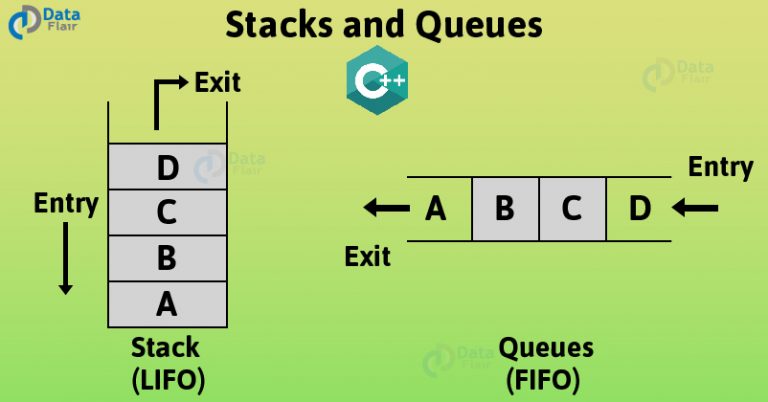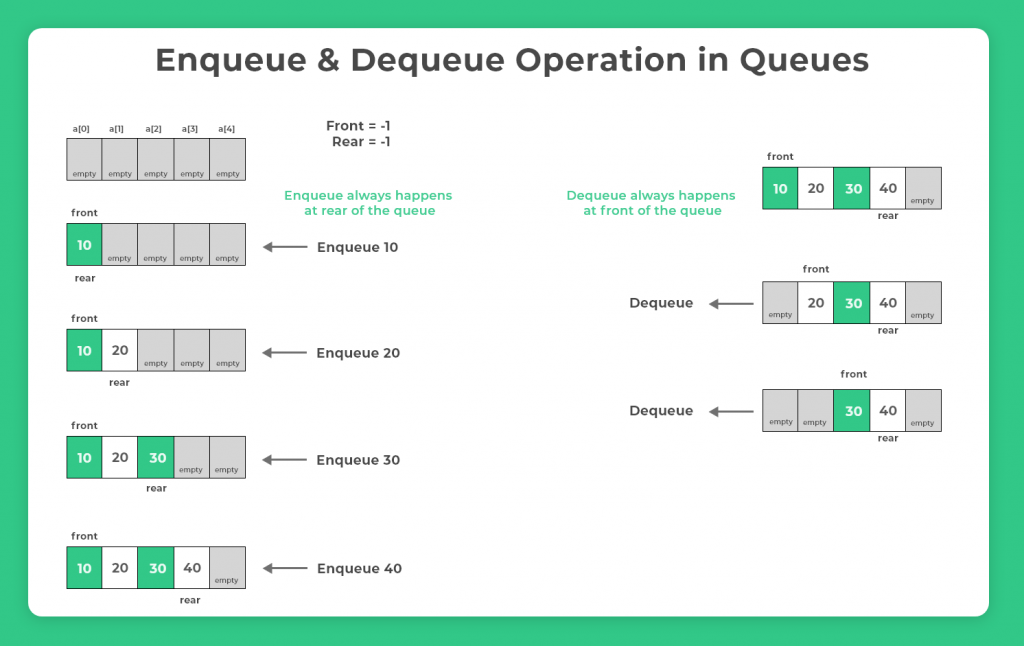

The deletion Operation is called Pop Operation. Insertion Operation is called Enqueue Operation. Insertion Operation is called Push Operation. The queue is based on FIFO (First In First Out) principle. The stack is based on LIFO (Last In First Out) principle. In the following table, we have listed the 10 main differences between Stack and Queue data structure to understand it easily: The first person in line will be served, and the last person in line will be served last. Customers are served and lined up in the same order that they arrived. A queue in operation can be seen clearly in the checkout queue at the grocery store. This guarantees that the printed documents appear in the order that they were sent.Īnother real-world instance is of a Grocery store checkout queue. The first document that is added to the queue will be printed first, and so on.

A queue is created when many papers are sent to a printer. Our first example will be of a Printer backlog. While performing operations in the queue, there are two pointers, the front pointer and the rear pointer, where the front pointer is used to point to the element that is added first in the queue and the rear pointer is used to point to the element which is added last in the queue.

The insertion technique in the queue data structure is called enqueue operation and the deletion technique in the queue data structure is called dequeue operation. Therefore, the queue data structure follows the FIFO(First In First Out) principle, which means the element inserted first from the rear end will be the first element to be deleted from the front end. The end of the list from where the elements are inserted is called the rear end and the end from where the elements are deleted is called the front end. The Queue is a linear data structure in which we can insert the element from one side of the list and delete the element from the other side of the list. As a result, the programme is able to trace which function is currently active alongside the function called it. The function is taken off the call stack when it completes and returns. A function is added to the call stack whenever it is called. This functions in a manner akin to a stack in computer programming.Ī call stack is a specific kind of stack that is employed in computer programming to keep track of function calls. The top book is taken out of the stack first when you take one out. You add books to the stack by stacking them on top of one another. You take the top plate out of the stack first when taking a plate out of the stack.Ī stack of books is another instance of a stack in real life. A plate is added to the stack by piling it on top of the previous ones. Therefore, a stack follows the LIFO (Last In First Out) principle, which means the element that is inserted last will be the first element to come out of the stack.Ī stack of dishes serves as a practical illustration of a stack.

The end of the stack used to perform all the operations is called the top of the stack. In the stack, we insert the element from one end with the push operation and delete the element from the same end using the pop operation. For example, if we want to access the element in the array we can do it at any time but in the case of stack data structure, there is only one sequence to access the element. Stack is a linear data structure that follows the specific order to perform the operations. But before all this, we first revise the basics. Then, we will know the practical applications of both of them. In this article, we will study all the main differences between Stack and Queue. Stack & Queue are two very important data structures in the programming world.


 0 kommentar(er)
0 kommentar(er)
